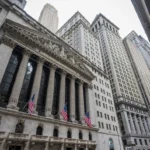David Schwartz, the Chief Technology Officer (CTO) of Ripple and a pivotal figure in the creation of the XRP Ledger (XRPL), has announced plans to reduce his daily involvement with the company by stepping down from his CTO role at the end of 2025. Schwartz, who has been with Ripple for over 13 years, will transition to the position of CTO Emeritus and join Ripple’s Board of Directors. He emphasized his ongoing commitment to the XRP community, expressing eagerness to explore new applications for XRP even as he shifts away from daily operational responsibilities.
Schwartz’s journey with Ripple began in 2011, where he collaborated with co-founders Arthur Britto, Jed McCaleb, and Chris Larsen in developing the XRP Ledger, which has since become one of the most utilized blockchain platforms globally. In 2018, he assumed the role of CTO, during which he spearheaded initiatives surrounding blockchain scalability, cross-border payments, and the establishment of Ripple’s ecosystem. Under his leadership, Ripple expanded its presence worldwide, secured numerous banking partnerships, and championed a call for more regulatory clarity within the crypto industry.
Reflecting on his career, Schwartz shared a personal message, highlighting his nearly four-decade professional journey that began with a contract at the U.S. National Security Agency (NSA) and culminated in significant contributions to the crypto realm. He expressed a desire to prioritize family time and revisit hobbies he had set aside. However, he clarified that he will remain active within Ripple, maintaining a hands-on role in coding and supporting builders in the XRPL community.
Schwartz’s new position as CTO Emeritus will allow him to provide strategic guidance while mentoring a new generation of engineers at Ripple. His appointment to the Board of Directors by Ripple co-founder Chris Larsen will further enable Schwartz to influence the company’s long-term vision, particularly in advocating for the integration of blockchain technology in finance and the endorsement of responsible regulatory practices.
As Schwartz prepares for this transition, the XRP ecosystem is experiencing significant developments. Anticipations around spot exchange-traded fund (ETF) approvals are growing, with the REX-Osprey XRP ETF already trading in the U.S., while pending proposals from other firms await approval from the SEC. The establishment of generic listing standards by the SEC is poised to expedite the approval process for more ETFs.
Additionally, Ripple’s stablecoin, RLUSD, which is pegged to the U.S. dollar, is gaining popularity, with major exchanges like Bybit adding trading pairs with RLUSD. Recent audits by Deloitte have affirmed the reserves and transparency of RLUSD, further bolstering confidence in the stablecoin.
In terms of market dynamics, the XRP token appears to have garnered renewed institutional interest following a favorable SEC verdict that cleared regulatory uncertainties. Developments within the XRPL and positive on-chain metrics indicate a buildup of momentum for the token. While technical signals suggest resistance near the $3.00 mark, the market sentiment as captured by the Fear & Greed Index indicates a divergence, with rising prices coinciding with anxiety among investors.







